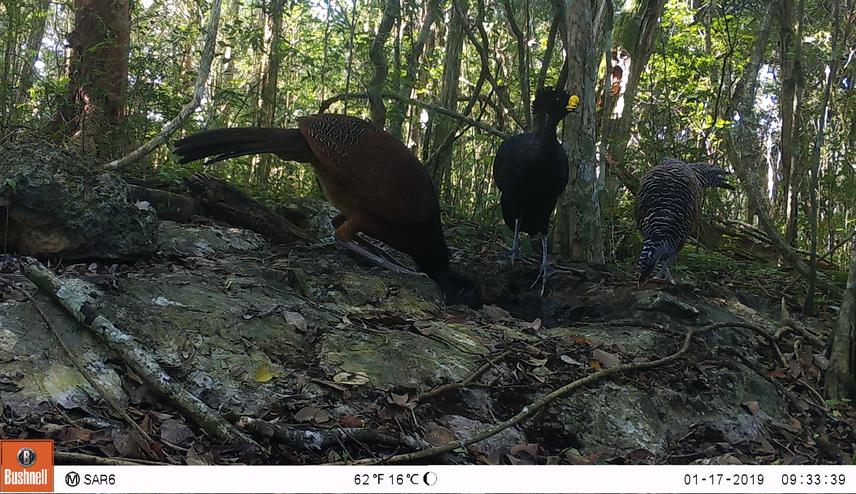Water availability directly or indirectly impacts almost any aspect of the natural history of tropical vertebrates. Wildlife inhabiting the seasonal tropical forests in the Calakmul region (southern Mexico) requires dealing with the scarcity of free-standing water. Over the last two decades, an important amount of knowledge on how wildlife makes use of terrestrial water bodies has been generated in the region. Despite this, we are far from having a comprehensive understanding of the spatio-temporal dynamics of the different water sources, and how the increasing human activities and climate change will modify the availability of this key resource in the region.

Great curassows (Crax rubra) drinking water in a terrestrial rock pool (sarteneja) within the Calakmul Biosphere Reserve, Mexico.
This project aims to generate a comprehensive knowledge about how the spatio-temporal distribution of small ponds (locally known as “aguadas”, small rock pools (locally known as “sartenejas”), and water-filled tree holes affect their usage by birds and mammals and how these water sources can be altered by climate change. Our main field activities are aimed at collecting data on the variation in water bodies (using Arduino-based sensors) and recording the use of water sources by birds and mammals using camera-trapping within the Calakmul Biosphere Reserve. These data together with modelling of future changes in the regional climate will help to assess the potential negative effects of climate change on the temporal distribution of water sources and their availability for wildlife.
We will organize a workshop and different meetings with local people and stakeholders aimed to raise awareness about the ecological role of water bodies, the threats affecting them and the reasons why we should ensure their protection. Our team will train a group of community monitors to participate in actions focused on the conservation of the fauna. Animals searching for water near apiaries, during dry seasons, in our project´s area, sometimes damage beehives generating a human-wildlife conflict. We will set up a pilot system of rainwater collection near apiaries with the aim to divert animal activity and, therefore, reduce the risk of beehive damage. To increase general people´s awareness of the magnificent fauna inhabiting the Calakmul Biosphere Reserve, and the need to increase our efforts to protect it, we will provide access to people interested in watching and labelling pictures of wildlife generated in this project, through an online interphase.
Header: A margay (Leopardus wiedii) recorded in a water-filled tree hole within the Calakmul Biosphere Reserve, Mexico.
